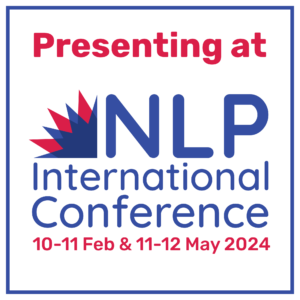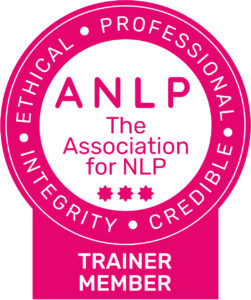How to Empower Coaching Clients

You can empower coaching clients by teaching them to own it. This is the new principle that I introduced as part of the client contracting process on my Coach Training with NLP, TA and Mindfulness course, which I am now teaching online.
The principle was for participants to notice when they were expressing personal views or emotions but not using what grammarians call the ‘first person’, in other words, not using the pronoun ‘I’.
Here are some steps we can take towards ‘avoiding’ the second person:
Empower clients: “I must start using ‘I’”
When they spotted this, they were invited to rephrase the sentence using ‘I’. The effect could be quite startling. There was a sense of newly admitting to the view or the feeling, which they seemed to have dodged by using other forms.
The forms that we use to distance ourselves this way are the second and third person.
- The second person is ‘you’. We say, “When x happens, you feel let down”, when what we mean is ‘When x happens, I feel let down’. Using ‘you’ like this not only disowns the feeling, but makes the statement ambiguous.Sometimes when people use ‘you’ to me in this manner, I get confused: are they talking about me? How do they know what I feel or don’t feel?
- The third person is he, she or they, but also the word ‘one’, often used to avoid owning feelings. One often finds people doing this…
The reason we avoid ‘I’
What I found fascinating was just how hard this exercise was for many of the participants – and for me, too. We’re (and I!) are just so used to using ‘you’ or ‘one’!
There’s a reason we do this, of course. Part of the reason is the need (or the perceived need, anyway) to sound more objective.
In business, in particular, we are supposed to be rational and not overrun by feeling. It can also make life less stressful; somehow ‘one feels angry at x’ feels less personal than ‘I feel angry at x’, and thus less likely to provoke a painful response.
But also we’ve simply been taught not to let our feelings out.
Sometimes such self-concealment is reasonable.
For example if you are new in a group of people, it’s useful to do some gentle testing out of the rules.
‘There’s a lot of anger about x around’ may elicit responses like ‘people who get angry about x are idiots’, which makes a gentle retreat a lot easier.
Hiding behind the second and third person doesn’t work
But in the end hiding behind second and third person or behind vague language is inauthentic.
In life, in the long term, inauthenticity gets us nowhere. And in coaching, we need our clients to be authentic. Empower them, otherwise it will slow down or prevent any personal change. As Shakespeare said, ‘above all else, to thine own self be true’.
However as coaches, we can’t just tell our clients to use first person. That’s not how coaching works. But we can empower people by steering them in that direction. Imagine a client hides behind second or third person – to reuse the example above, she says “You feel let down”.
You can say something like, “I feel more connected to you when you speak in first person and say ‘I feel let down.’” Most clients will agree to that – and they will often be amazed at the reaction such a small change of phrasing will make.
Did you like this post?
Then check out our events and courses!
Sign up to our new e-learning!
Where to find us
For posts, events, free open days and more, follow NLP School on:
Where to find Robbie
Twitter: @RSteinhouse
LinkedIn: Robbie Steinhouse
What to read next
Content and Process: The Essence of NLP Coaching
How NLP Can Improve Your Confidence: Part One









